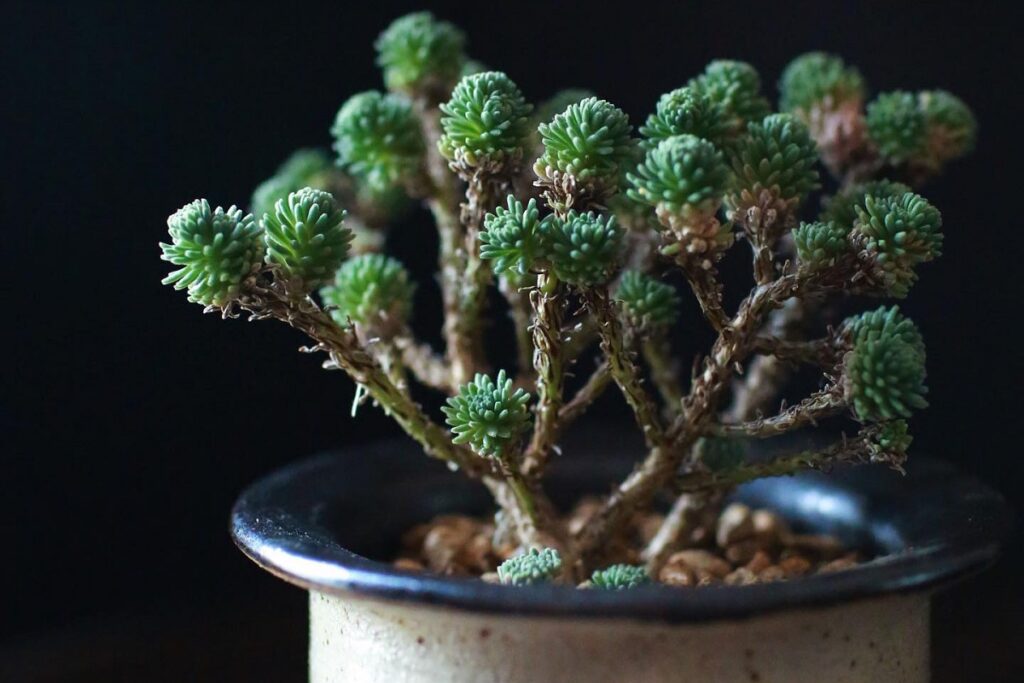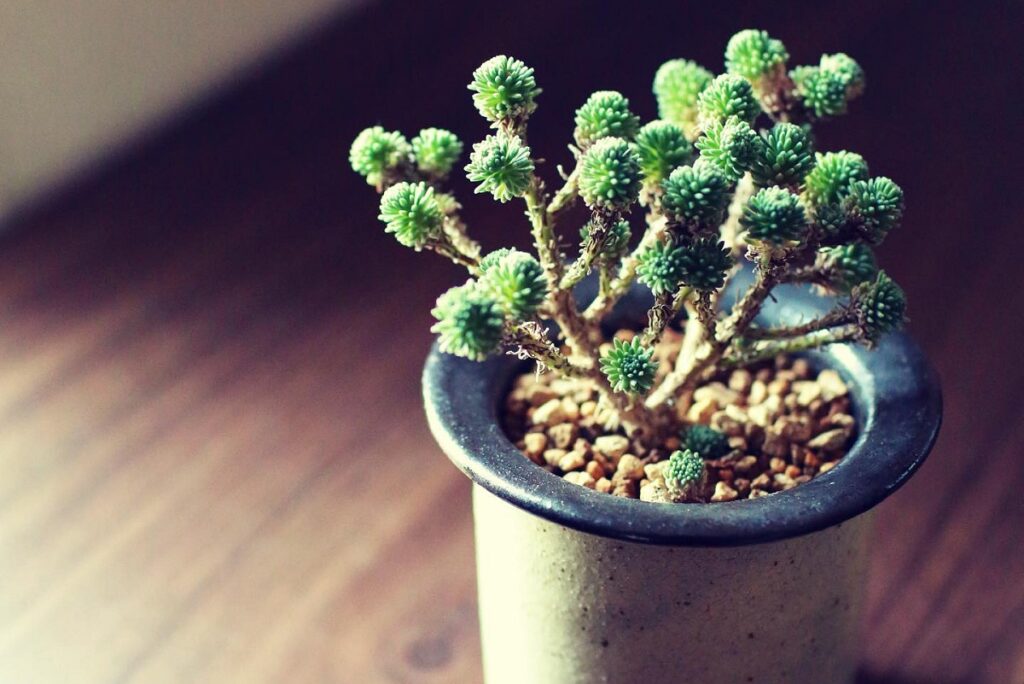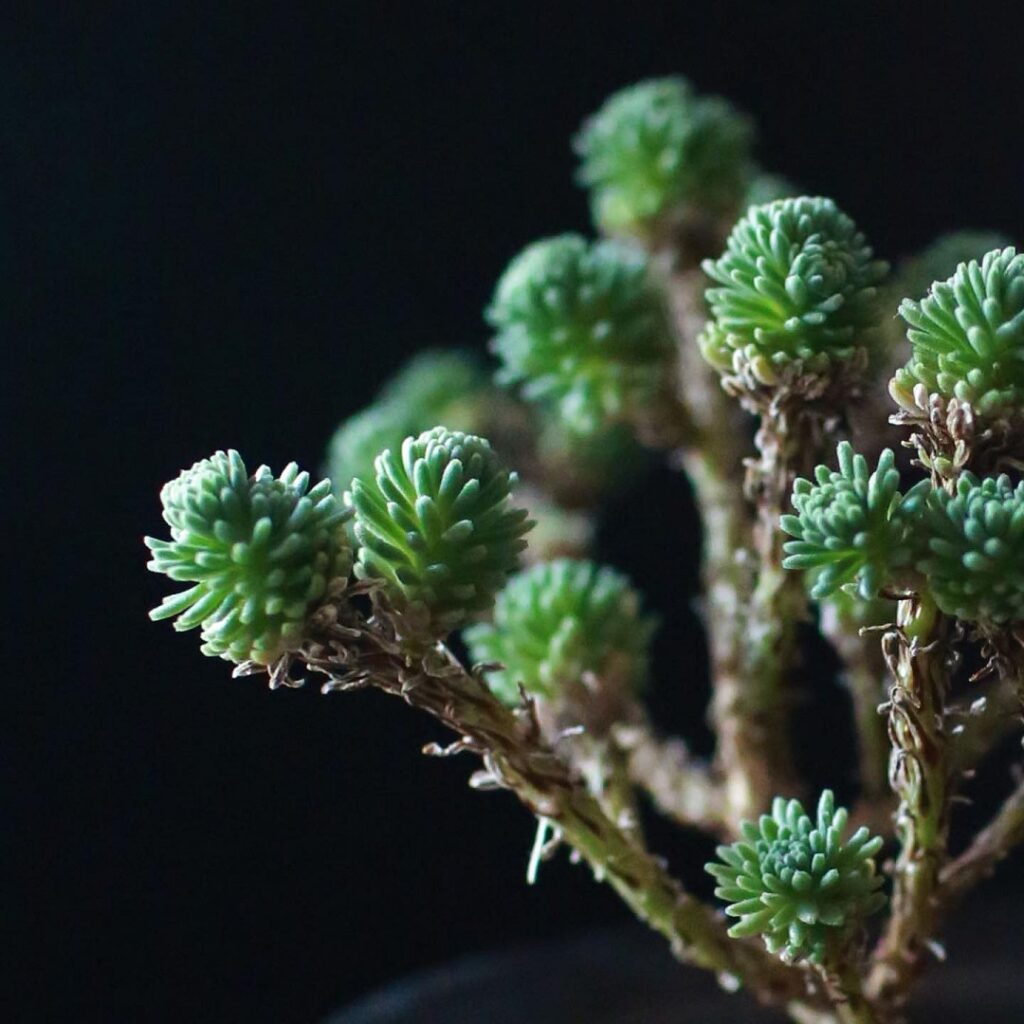Sedum multiceps: A Living Bonsai from the Algerian Deserts
They say good things come in small packages, but the Sedum multiceps takes tiny to a whole new level of weird and wonderful! This miniature succulent, nicknamed the Pygmy or Miniature Joshua Tree, is an absolute must-have for any plant lover looking to bring a taste of the desert into their home.
Just picture dense mats of thick, woody stems topped with tufts of bluish-green fleshy leaves clustered in a stunning imitation of the iconic Joshua Trees found in the American Southwest deserts. Then, as if that bizarre beauty wasn’t enough, come August this diminutive dude erupts into a vibrant explosion of yellow starburst flowers around 5 inches across! It’s like a tiny, living bonsai decided to put on a funky little light show.

Contents
About Sedum Multiceps
The Sedum multiceps is a petite succulent gem native to the arid deserts of Algeria. Despite its diminutive stature, this plant is an absolute showstopper. Imagine dense mats of thick, woody stems topped with tufts of bluish-green, fleshy leaves clustered in a striking resemblance to the iconic Joshua Trees of the American Southwest. Then, in August, vibrant yellow starburst flowers about 5 inches wide add a brilliant pop of color. As it matures, the main stem develops a gnarly, trunk-like appearance. While this living bonsai spreads rapidly when cultivated properly, it maintains a quirky compact form rarely exceeding 6 inches tall. Weird in the best way possible!
Related Post:
130+ Attractive Sedum Varieties With Pictures
Sedum Multiceps Care Guide
Now that you’re smitten, let’s dive into keeping your Sedum multiceps thriving:
Light
These sun-worshipers need at least 6 hours of direct light daily. A sunny window is perfect indoors, or supplement with a grow light. Avoid scorching by providing some afternoon shade outdoors in hot climates.
Water
When it comes to watering your miniature Joshua Tree, remember that less is more. These drought-tolerant succulents like a deep soaking followed by a nice, long dry spell. During the growing season (spring to fall), plan to thoroughly soak the soil about once a week, allowing it to fully dry out before watering again. Too much moisture is a recipe for rot. In the winter months, you can back off to watering just once a month. Pay close attention and you’ll get the hang of this dry-as-a-desert routine!

Soil
If you want your Sedum multiceps to truly thrive, providing the perfect well-draining soil mix is key. A gritty cactus/succulent soil blend is ideal, combined with about 40% minerals like perlite, gravel or lava rocks to ensure rapid drainage. This allows any excess moisture to quickly escape after watering while still providing enough moisture retention for the plant’s needs. With the right soil, your bizarre little bonsai will be perfectly content!
Fertilizer
These minimalists thrive on neglect, so go easy on the feed. If soil is really lacking, you can use a half-strength succulent fertilizer during growing months. Too much food makes them grow leggy and lose form.
Temperature & Humidity
Sedums are pretty chill, surviving temps from 95°F down to 5°F. Indoors, aim for 65-75°F. They’ll handle average household humidity just fine.
Pests & Problems
Soggy soil leads to rot, so be sure drainage is on point. Otherwise, these hardy plants laugh in the face of pests and diseases. Minor attacks can be treated with neem oil or manually removing affected areas.
Pruning
To maintain their signature dense, compact shape, pinch off new growth in spring and remove any dead or damaged stems or leaves as needed.

Potting and Repotting
Sedums resent being rootbound, so provide enough gritty, well-draining soil. Repot annually in spring after their winter dormancy ends.
How to Propagate Sedum Multiceps
Sedums are prolific propagators, allowing you to multiply your plant babies from just a few cuttings or leaves.
Division (early spring):
- Carefully dig up the plant, separating it into sections with roots/buds intact
- Replant the divisions with spacing for spreading
Cuttings:
- Use sharp, clean shears to snip off mature stem sections
- Allow cuttings to dry for 2-3 days so ends can callus over
- Plant cuttings just deep enough to stand upright in well-draining mix
- Water sparingly until new growth appears in 2-3 weeks
Leaves:
- Gently twist off firm, healthy leaves from stem tips
- Allow leaf cuttings to dry for 2-3 days
- Lay leaves on soil surface and lightly cover base of each leaf
- Water sparingly until new growth sprouts from leaf base in 2-4 weeks
And there you have it! With a little TLC, you’ll be the proud parent of an ever-expanding miniature Joshua Tree colony. These bizarre yet beautiful living bonsais are absolute must-haves for any plant weirdo’s collection! What are you waiting for? Let’s get planting!
